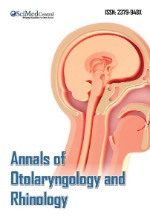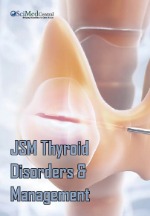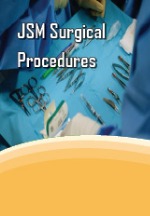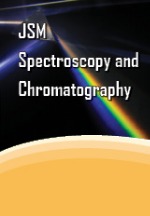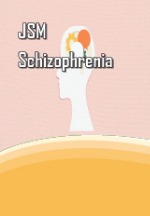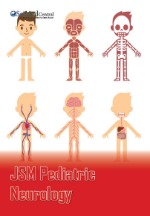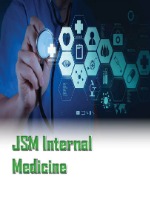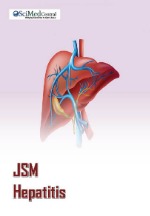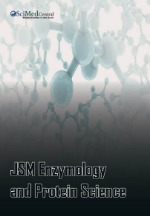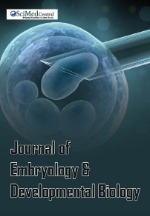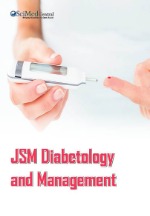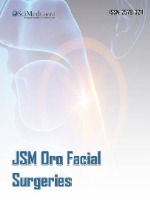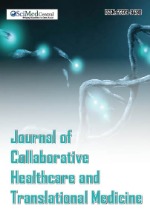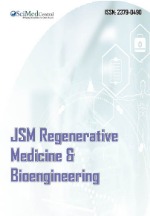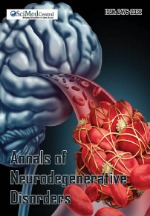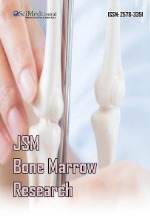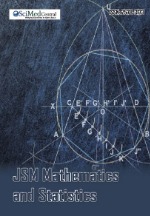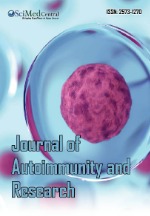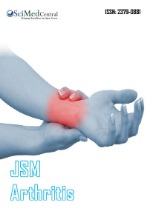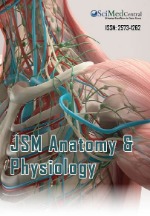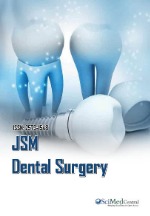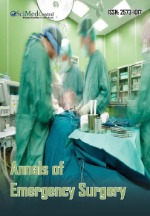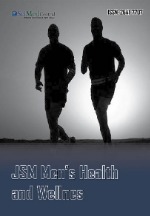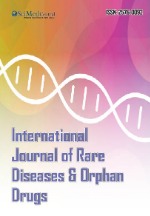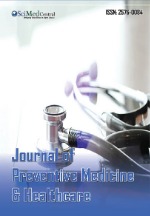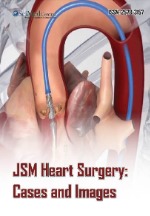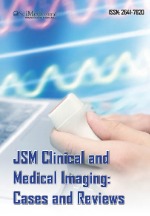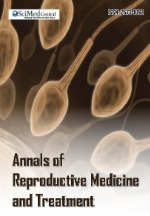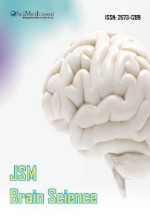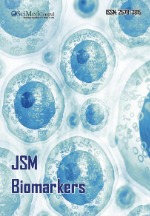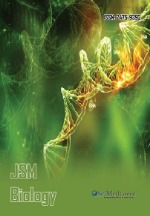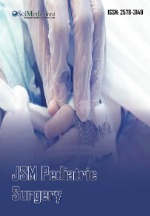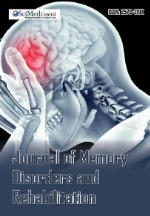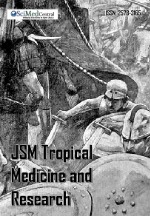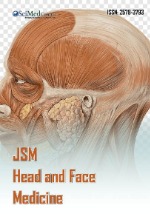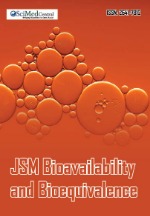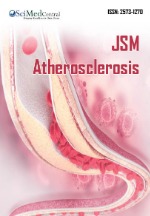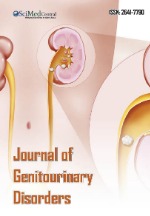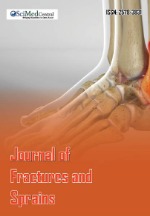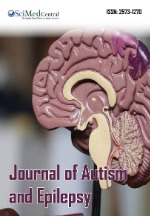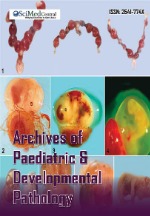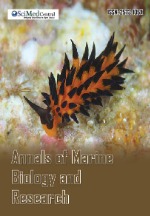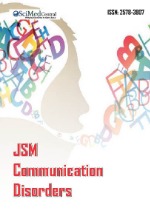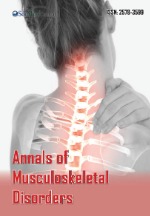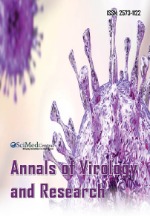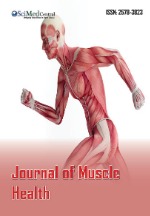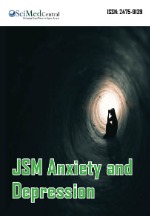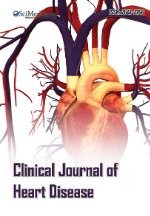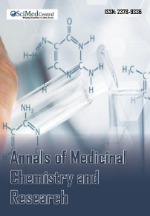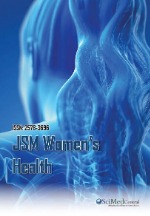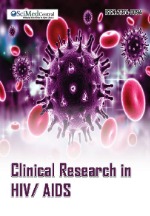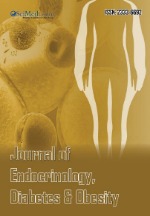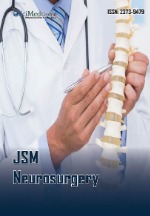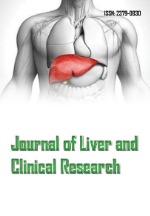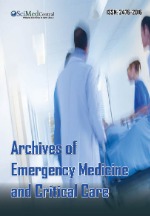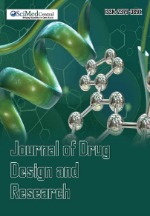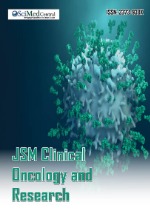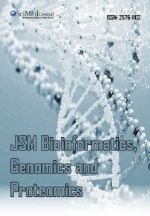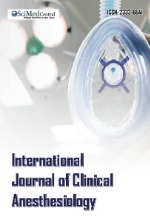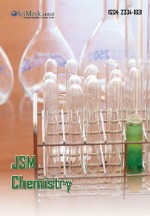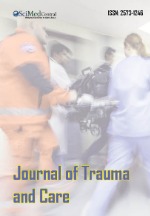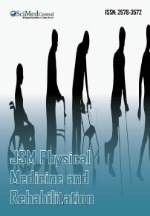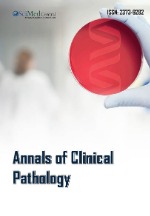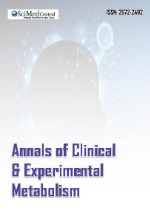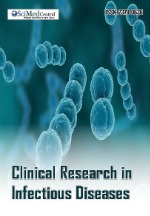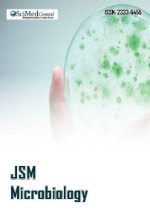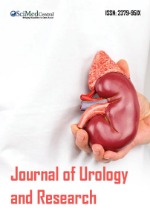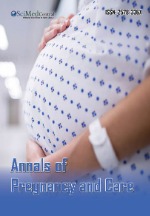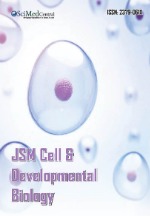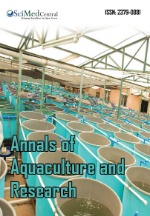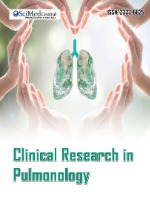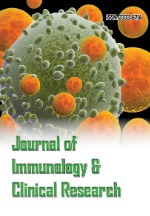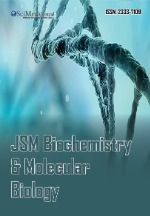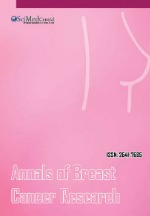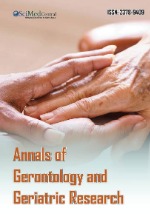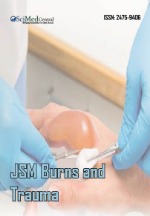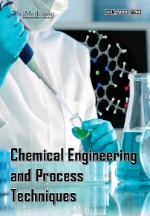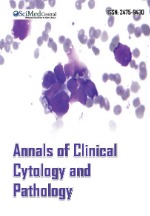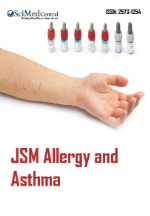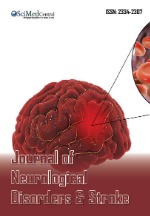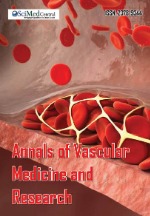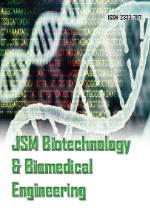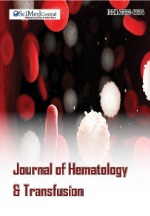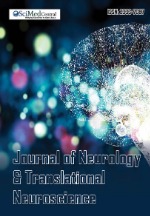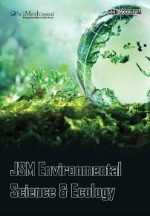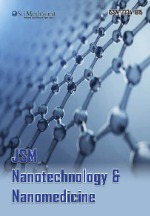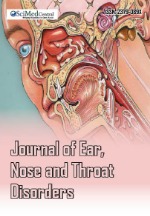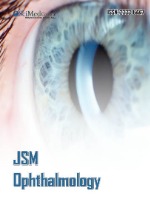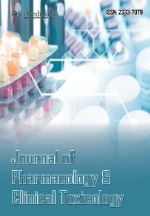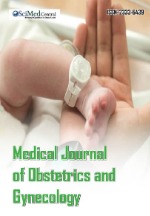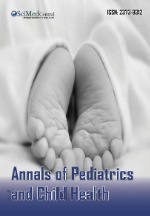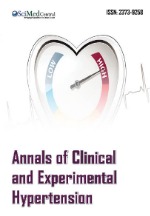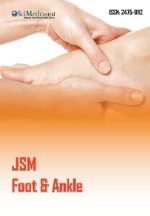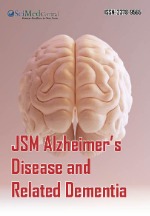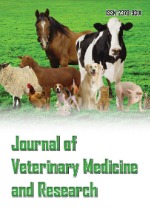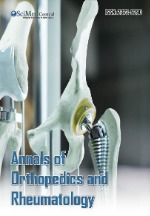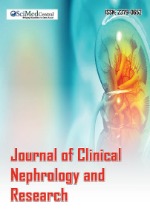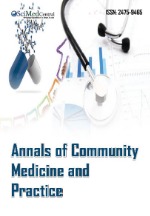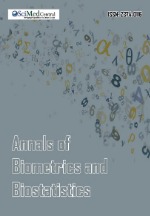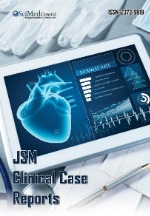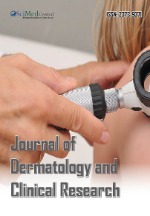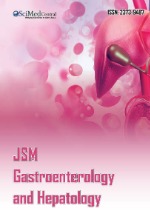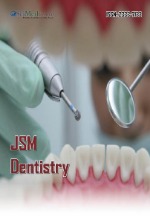The Upper Nasal Space as a Promising New Route for Drug Administration : Implications for Nasal Safety Assessments From the Pivotal STOP 301 Study of INP104
- 1. Proliance Surgeons, Seattle, WA
- 2. Pediatric Specialty Partners, San Diego, CA
- 3. New Orleans Sinus Center, New Orleans, LA
- 4. Impel Pharmaceuticals, Seattle, WA
ABSTRACT
Objective: To report the nasal safety of INP104, a drug-device that delivers dihydroergotamine mesylate to the upper nasal space using Precision Olfactory Delivery, for the acute treatment of migraine.
Methods: STOP 301 was a Phase 3 open-label study that assessed the safety, tolerability, and exploratory efficacy of INP104 (1.45 mg) in adult migraine patients over 24 and 52 weeks. Primary endpoints were the number of patients reporting Treatment-emergent Adverse Event (TEAEs), change in nasal mucosa as detected by nasal endoscopy (Quantitative Scoring Scale for Evaluation of the Nasal Mucosa [QSS-NM]), and change in olfactory function (University of Pennsylvania Smell Identification Test [UPSIT]) over 24 and 52 weeks of treatment. Further, whether nasal endoscopy was necessary to monitor INP104 safety or whether monitoring patient-reported TEAEs was adequate was investigated. This involved an independent Nasal Safety Review Committee (NSRC) comprised of 3 otolaryngology experts who reviewed blinded data.
Results: Overall, 354 patients received ≥1 dose of INP104 over 24 weeks and 73 patients continued into extension period. Over 24 and 52 weeks, 45.8% and 58.9% of patients reported a nasal TEAE, respectively, of which none was serious. Minimal mean decreases (<0.5), over 24 weeks, and mean increases/decreases (≤1.0), over 52 weeks, from baseline were observed in the UPSIT score and at all time points. The UPSIT detected 17 cases of subclinical olfactory reduction in patients with nasal TEAEs of “olfactory test abnormal,” most of which resolved (14 cases). Mean increases from baseline in QSS-NM total score were minimal (≤0.2) at each visit up to 52 weeks.
Conclusion: The NSRC concluded that patient-reported TEAEs were sufficient to monitor INP104 nasal safety, and that nasal endoscopies and the UPSIT added no clinical value.
There were no significant safety concerns, including no reports of persistent olfaction decrease, and all TEAEs were minor.
KEYWORDS
- Nasal Safety
- INP104
- Dihydroergotamine mesylate
- Upper nasal space
- Precision Olfactory Delivery
CITATION
Davis G, Pransky SM, Fatakia A, Shrewsbury SB (2022) The Upper Nasal Space as a Promising New Route for Drug Administration: Implica- tions for Nasal Safety Assessments From the Pivotal STOP 301 Study of INP104. Ann Otolaryngol Rhinol 9(5): 1303.
ABBREVIATIONS
AE: Adverse Event; AUC: Area Under the Concentration– Time Curve; Cmax: Maximum Plasma Concentration; DHE: Dihydroergotamine; GI: Gastrointestinal; IV: Intravenous; FDA: Food and Drug Administration; FSS: Full Safety Set; MedDRA: Medical Dictionary for Regulatory Activities; NSRC: Nasal Safety Review Committee; POD: Precision Olfactory Delivery; QSS-NM: Quantitative Scoring Scale for Evaluation of the Nasal Mucosa; TEAE: Treatment-emergent Adverse Events; UPSIT: University of Pennsylvania Smell Identification Test.
INTRODUCTION
Nasal delivery has long been viewed as an attractive route of drug administration because of its non-invasiveness and rapid onset of effect [1-3]. Drugs administered nasally can be utilized in a wide range of care settings, can be self- or caregiver- administered, and are beneficial for patients with needle phobia or where needlestick injuries present risks to staff and patients [2-4]. Moreover, because nasally delivered drugs are absorbed through the nasal mucosa, they bypass first-pass hepatic metabolism and gastrointestinal (GI) absorption, which can enhance onset of action and bioavailability [3, 5-8]. Because of these advantages, nasal drug delivery is increasingly being considered for disease management, especially for conditions in which rapid effective drug levels are required.
However, there are differences in drug delivery to different parts of the nose that have not been fully explored. A better appreciation of the anatomical and physiological diversity of the human nasal cavity would improve drug delivery methodology, drug formulation strategies, and ultimately, clinical outcomes. The human nose can arbitrarily be divided into the lower and upper nasal spaces [9]. The lower nasal space can include the nasal vestibule, which is lined with non-ciliated squamous epithelium that is poorly suited for drug absorption, and the nasal turbinates, which are lined with often prolific mucus and motile cilia that function to rapidly clear deposited drug (i.e., mucociliary clearance) [9-11]. These features may lead to variable drug absorption in the lower nasal space that are compounded by changes in mucociliary transport due to allergies or infectious response, swallowing, or expectoration of drug [5, 9, 11-13]. Anatomical abnormalities such as septal deviation and following sino-nasal surgery may also contribute to variable drug absorption from the lower nasal space [14, 15]. The upper nasal space, which is where the olfactory epithelium is located, can include the superior nasal septum, medial surface of the superior turbinate, and sectors of the medial surface of the middle turbinate. Olfactory epithelium contains olfactory sensory neurons that provide the sense of smell and is better suited for drug absorption because it is lined with mostly non- motile cilia, with correspondingly slower mucociliary clearance, and is highly vascularized [9, 11, 16-21]. Although drugs that are deposited into the upper nasal space may be more consistently absorbed compared to the lower nasal space, the major challenge of drug delivery to the upper nasal space is that it is difficult to access because of complex anatomical features, including passing through the narrow nasal valve and the orientation of the turbinates (Figure 1) [9, 22].
Figure 1 Cross-section of the frontal portion of the human head, representing the posterior third of the nasal cavity, with outlined region highlighting areas commonly enriched with olfactory epithelium.
Adapted from Salazar I, Sanchez-Quinteiro P, Barrios AW, López Amado M, Vega JA. Handb Clin Neurol. 2019; 164: 47-65, with original adaptation from Schünke M, Schulte E, Schumacher U, et al. Prometheus: Texto y Atlas de Anatomía. 3ª edición, vol. 3. Madrid: Panamericana; 2014 [19].
The safety of nasal drug delivery must take into account both active ingredients and excipients and includes local, systemic, and (for any fraction inhaled into the lower respiratory tract) pulmonary side effects [1]. Safety factors that should be considered when developing nasally delivered drugs include minimizing impairment of nasal blood flow, enzymatic activity in the nasal mucosa, olfactory function, and the nasal mucociliary system, all of which perform crucial physiological functions [1, 23]. Depending on the frequency and duration of use, nasally delivered drugs can potentially cause irritation, congestion, epistaxis, numbness, nasal crusting, and altered sense or loss of smell or taste, some of which can have debilitating consequences for the patient [1, 23-30]. Such adverse events (AEs) can be caused by using preservatives, which are often necessary to prevent contamination and degradation, and penetration enhancers, which facilitate drug absorption across the nasal mucosa, in drug formulations [1]. Benzalkonium chloride, a commonly used preservative in cosmetics and several over-the-counter nasal formulations, has been shown to have multiple toxic effects on the nasal mucosa, ranging from ciliostasis to a variety of nasal lesions, including epithelial desquamation, degeneration, and edema [31, 32]. The surfactant laureth-9 and the bile salts sodium deoxycholate and sodium taurodeoxycholate can cause severe, irreversible changes to nasal epithelium, including gross deformations of mucosal surface integrity and ciliary morphology [33, 34]. Despite these concerns, the nasal safety of nasally administered drugs has not been consistently or rigorously scrutinized prior to approval, a process which could be aided by having more simple and reliable tests for intranasal cytotoxicity readily available [35].
Precision Olfactory Delivery (POD®) is a manually actuated, dose-metered, propellant-powered device used to deliver liquid or powder drug formulations to the upper nasal space and thus to regions that contain olfactory epithelium [22,36,37]. INP104 (TRUDHESA®, Impel Pharmaceuticals, Seattle, WA) is a drug-device combination product of POD and liquid dihydroergotamine (DHE) mesylate that was approved by the Food and Drug Administration (FDA) for the acute treatment of migraine in September 2021 [38,39]. DHE mesylate has long been used for the acute treatment of migraine and is commonly administered by intravenous (IV) injection (D.H.E. 45®; Bausch Health Companies Inc, Bridgewater, NJ [40]); however, this route of administration is frequently associated with systemic AEs that can limit its use [41,42]. A nasal preparation of DHE mesylate (Migranal®; Bausch Health Companies, Inc. or its affiliates, Bridgewater, NJ) delivered to the lower nasal space has been available since 1997, but inconsistent response, spillage, and AEs (altered taste and nausea) have limited its use [37, 41, 43]. Phase 1 pharmacokinetic data from the STOP 101 study demonstrated that INP104 was rapidly absorbed, with peak plasma levels of DHE similar to IV DHE mesylate by 30 minutes and up to 48 hours, and had a better tolerability profile than IV DHE mesylate likely due to a lower maximum plasma concentration (Cmax). Importantly, the Cmax with INP104 was 4-fold higher, and the area under the concentration–time curve (AUC) was 3-fold higher with reduced variability compared with Migranal, with the exact same formulation but at a lower dose in these healthy volunteers [37]. Exploratory efficacy results from the Phase 3 STOP 301 study showed that pain freedom, most bothersome symptom freedom, and pain relief at 2 hours were self-reported by 38.0%, 52.1%, and 66.3% of patients, respectively, for the first INP104-treated migraine attack. Safety and tolerability data showed that INP104 was well tolerated over 24 and 52 weeks of treatment [38].
There are currently no standardized safety assessments for drugs delivered to the olfactory epithelium of the upper nasal space, as this region cannot be visualized by a standard nasal exam (i.e., using a nasal speculum and head light or, more commonly in recent years, an otoscope). As such, methods for clinical safety assessment need to be reconsidered to account for changes that may occur in the upper nasal space because of acute or repetitive drug administration to the olfactory mucosa. To address this, assessments specific for upper nasal space delivery were developed in collaboration with otolaryngology experts during clinical trials of INP104 per the FDA’s request. These included the University of Pennsylvania Smell Identification Test (UPSIT)—a validated tool for the assessment of olfactory function—and the novel Quantitative Scoring Scale for Evaluation of the Nasal Mucosa (QSS-NM), which was adapted from the familiar Modified Lund-Kennedy Scoring system to evaluate changes in the nasal mucosa post-drug delivery based on endoscopic assessment [44, 45]. Here, the results of these nasal safety assessments with long- term INP104 use are reported from the Phase 3 STOP 301 safety trial in patients with migraine.
MATERIALS AND METHODS
STOP 301 was a Phase 3, interventional, open-label, single- group assignment study that evaluated the safety, tolerability, and exploratory efficacy of long-term use of INP104 in patients with migraine (NCT03557333). The detailed methodology of this study has been published previously [38]. In brief, eligible patients were adult males or females (aged 18-65) with a confirmed diagnosis of migraine (by International Classification of Headache Disorders [ICHD]-3β criteria) with or without aura, and with ≥2 migraine attacks per month (maximum 14 migraine attacks per month) in the previous 6 months and during the 28- day screening period. Patients were excluded if they had the following nasal conditions or symptoms: recurrent sinusitis or epistaxis, or chronic rhinosinusitis with nasal polyps (unless surgically resolved >3 months prior to screening); significant nasal congestion, physical blockage in either nostril, significantly deviated nasal septum, septal perforation, or any preexisting upper nasal mucosal abnormality on endoscopy scoring 1 or more (except score 1 was allowed for mucosal edema) for any parameter on the QSS-NM. Patients used their best usual care to treat migraine attacks during a 28-day screening period, which was followed by a 24-week treatment period during which patients were provided with up to 3 doses per week of INP104 (1.45 mg in a dose of 2 sprays) for use with self-recognized migraine attacks. For a subset of patients, treatment was extended to provide data on ≥50 patients completing 52 weeks of treatment. Primary endpoints were the number of patients reporting treatment-emergent adverse events (TEAEs), change in nasal mucosa as detected by nasal endoscopy using a flexible or rigid endoscope up to 3 mm in diameter and assessed by the QSS-NM, and change in olfactory function using the UPSIT over 24 and 52 weeks of treatment, and determination if nasal endoscopy is a necessary screening tool to determine the safety of INP104.
To better assess nasal safety outcomes for drug delivery to the upper nasal space, a Nasal Safety Review Committee (NSRC) consisting of a panel of 3 independent, experienced rhinologists participated in the development and evaluation of nasal safety monitoring tools. In addition, some sites recorded video or still images of the upper nasal space mucosa during endoscopy. These anonymized images were then reviewed by the NSRC, who were blinded to the image sequence and any corresponding reported TEAEs; their conclusions were then compared with the unblinded endoscopic evaluations and any reported nasal TEAEs. As part of the NSRC review process, each member of the NSRC completed a questionnaire about the STOP 301 data and returned it to the Independent Safety Physician prior to the NSRC review meeting. During the review meeting, the 3 NSRC members discussed the questionnaire responses and reached a preliminary opinion. After the initial discussion, the committee was unblinded to the order of the scrambled images and held a further discussion to determine if their preliminary opinion had changed.
The UPSIT was performed at screening and baseline (the baseline result was taken as the mean of the 2 results), and then every subsequent 12 weeks. The full test consisted of 4 booklets of 10 odorants each for a total of 40 scratch-and-sniff odorants, which appeared as multiple-choice questions on the test (maximum score of 40). The booklets contained different combinations of odorants [46]. The UPSIT has been used to detect Parkinson’s disease, in which disturbed olfaction is often an early sign [47, 48]. A monthly, manual medical review was performed to identify any temporally related TEAEs as potentially causative factors of an UPSIT score decrease of ≥5, such as seasonal allergies, so that an assessment of relationship to INP104 treatment could be made. If the UPSIT score decrease of ≥5 was asymptomatic, the site was instructed to enter the test result as an AE, which was then coded to the preferred term “olfactory test abnormal.” If a decrease of ≥5 points remained unresolved at a repeat UPSIT 4 weeks later, INP104 was discontinued. Changes in nasal mucosa were assessed using the QSS-NM, a grading scale developed specifically for this study (Table 1).
|
Table 1: Quantitative Scoring Scale for the Evaluation of the Nasal Mucosa (QSS-NM)a. |
||
|
Finding |
Grading Criteria |
Score |
|
Mucosal irritation |
0 = None Grade 1A = focal irritation Grade 1B = superficial mucosal erosion Grade 2 = moderate mucosal erosion Grade 3 = ulceration Grade 4 = septal perforation |
0 1 2b 3b 4b 5b |
|
Epistaxis (frank bleeding or dried blood clot) |
None Mild = self-limited Moderate = significant, prevents daily activity Severe = emergency room visit or hospitalization |
0 1 2b 3b |
|
Mucosal edema |
None Mild Moderate Severe |
0 1 2b 3b |
|
Nasal discharge |
None Mild Moderate Severe |
0 1 2b 3b |
|
Mucosal crusting |
None Mild Moderate Severe |
0 1 2b 3b |
|
aFor future studies of other drugs delivered to the upper nasal space and where endoscopy is to be implemented, consideration should be given to more stringent criteria for adverse event reporting, such as a total QSS-NM score of more than 7 and a mucosal edema score of 3 or more. Consensus was reached that a mucosal edema score of 2 or less should not be considered an adverse event. bIndividual score triggering adverse event reporting and follow-up nasal endoscopy. |
||
Nasal endoscopies were performed by experienced otolaryngologist endoscopists during screening and at 4, 8, 12, and 24 weeks, as well as at 36 and 52 weeks for the extension subset. For each side of the nose (left and right), a score was calculated by summing the individual scores for 5 categories: mucosal irritation (0-5), epistaxis (0-3), mucosal edema (0-3), nasal discharge (0-3), and mucosal crusting (0-3); both side scores were then summed to attain a total upper nasal score (maximum of 34). In the same endoscopy session, a similar process was followed to score the lower nasal space. TEAE reporting and repeat endoscopy was triggered by the following criteria: Total upper QSS-NM score >7; an individual upper QSS-NM score of ≥2 for any of the 5 categories; and abnormal, clinically significant findings on upper or lower endoscopy. TEAEs were classified or coded using the Medical Dictionary for Regulatory Activities (MedDRA) version 21.0. Because nasal-related events, defined as AEs associated with the nose in any way, could be coded under >1 major category or system organ class, they were identified using a custom MedDRA query list that included UPSIT score decreases of ≥5 points and QSS-NM findings meeting shift criteria, even if asymptomatic. All enrolled patients who received ≥1 dose of INP104 were included in the 24-week full safety set (FSS). The 52-week FSS comprised all patients who qualified, consented, enrolled into, and received ≥1 dose of INP104 during the 28-week extension period. Safety endpoints were analyzed using descriptive statistics; the baseline for investigator-evaluated endpoints was the last observation prior to or on the day of enrollment. Continuous safety data were summarized with descriptive statistics, while categorical safety data were summarized by frequency counts and percentages.
DISCUSSION
Nasal delivery of drugs has the potential to overcome the limitations of other delivery modalities: orally administered drugs (the most widely used route of administration) must pass through and be metabolized in the GI tract during absorption; injectables require a skin puncture and thus face potential needle-related issues; and pulmonary delivery requires complex formulation and manufacturing to deliver a consistent “respirable fraction” of drug [2, 4, 5, 9, 49-51]. Although there are now many over-the-counter medications utilizing nasal administration, after the recall of particular nasal sprays due to unanticipated olfactory side effects, there has been increased attention focused on the potential for undesirable effects, especially on the olfactory mucosa [52]. The nasal safety of INP104 is reported from a Phase 3, open-label safety study in patients with migraine. Because of the novelty of drug deposition in this part of the nose, assessments of nasal safety were developed in collaboration with an independent NSRC and implemented in the STOP 301 study [38]. Changes in olfactory function as detected by the UPSIT were minimal over 24 weeks (mean decreases of <0.5 from baseline) and 52 weeks (mean increases/decreases ≤1.0 from baseline) of treatment at all time points, as were changes to the upper nasal mucosa as graded by the QSS-NM (≤0.2 at each post-baseline visit up to 52 weeks of INP104 treatment). Nasal AE monitoring revealed that a small percentage (4%) of patients experienced nasal TEAEs at least possibly related to INP104 that led to treatment discontinuation over the course of the study. Further, nasal TEAEs at least possibly related to INP104 that led to INP104 withdrawal occurred after the first 3 doses in most patients (71.4%), suggesting that nasal TEAEs leading to INP104 discontinuation arose early in the treatment process. In the independent opinion of the NSRC, patient-reported AEs were sufficient to monitor the safety of intermittent use of INP104. Although no safety concerns arose based on this review of the data and no patient reported persistent subjective olfactory loss, there were 3 patients whose UPSIT scores declined from baseline by ≥6 units, which was slightly greater than the 5 units chosen as the threshold for reporting “olfactory function abnormal.” Similar results were obtained for INP105, an investigational drug-device combination that uses POD to deliver a spray-dried powder formulation of olanzapine to the olfactory epithelium of the upper nasal space to treat acute agitation. A Phase 1 study in healthy participants reported no concerning findings in nasal examinations in any of the treatment groups, albeit after only a single administration [36]. Overall, the nasal safety of INP104 and INP105, which both utilize POD, was assessed in clinical trials, and results from 3 separate studies support that upper nasal space drug deposition using POD is safe and well tolerated on the nasal mucosa [36-38].
To the best of the authors’ knowledge, INP104 has been the only successful development program delivering drug to the olfactory epithelium of the upper nasal space that was required to undergo specific nasal safety testing for regulatory approval, which led to it being approved for the acute treatment of migraine. The only other available nasal spray for the acute treatment of migraine that reports delivering some drug to the upper nasal space is ONZETRA® Xsail® (Currax Pharmaceuticals LLC, Morristown, NJ; approved in 2016), which is a disposable, single-use nosepiece containing 11 mg of sumatriptan powder to be used in each nostril for a total dose of 22 mg [5, 53]. No data on the nasal safety of ONZETRA Xsail on olfactory mucosa structure and/or function are currently available, and to the best of our knowledge, no nasal safety testing was required by the FDA for this product [9]. ST266 (Noveome Biotherapeutics, Inc, Pittsburgh, PA) is an investigational cell-free biologic that is composed of proteins and other factors important for cellular healing, neuroprotection, and modulation of inflammation and is reported to be delivered to the upper nasal space with a target of reaching the olfactory nerve and brain using SipNose technology
[54]. Noveome submitted an investigational new drug application to the FDA in August 2019 and obtained a “safe to proceed” evaluation, with patient dosing now underway. ST266 is currently in Phase 1 trials for optic neuritis and glaucoma, but it is not known if the FDA will require nasal safety testing for approval [55]. The only other study the authors found that assessed nasal safety during clinical trials examined the impact on olfactory function and nasal tolerability of long-term treatment with esketamine nasal spray (SPRAVATO®; Janssen Pharmaceuticals, Beerse, Belgium) taken with an oral antidepressant in patients with treatment-resistant depression [56]. This study consisted of an analysis of 1,142 patients from 4 multicenter, randomized, double-blind, Phase 3 studies: 3 short-term studies and 1 long- term maintenance study. Although esketamine nasal spray delivers drug mainly to the respiratory epithelium, the authors emphasized the importance of assessing the nasal safety of nasally delivered agents. Nasal safety assessments included the 40-item UPSIT; the single-staircase Snap & Sniff Odor Detection Threshold Test; and nasal tolerability measures, including nasal examinations and a quantitative, self-administered nasal symptom questionnaire. Repeated intermittent administration of esketamine nasal spray at any dose with both short- and long- term use did not show evidence of adverse effects on olfactory or nasal health measures; it is not known if the nasal safety testing reported here was required by the FDA [56].
Nasal AEs have been reported during clinical trials for several nasal products indicated for the acute treatment of migraine. These include several triptans (serotonin [5-HT1B/1D] receptor agonists), which are considered first-line therapies to acutely manage migraine [57, 58]. ONZETRA Xsail was associated with nasal AEs (≥2%) of abnormal taste (20%), nasal discomfort (11%), rhinorrhea (5%), and rhinitis (2%) [53]. Imitrex® (sumatriptan nasal spray; GlaxoSmithKline, Research Triangle Park, NC) was associated with nasal AEs (≥1% and greater frequency than placebo) of burning sensation (1.4%, 20 mg; 0.6%, 10 mg; 0.4%, 5 mg), disorder/discomfort of nasal cavity/sinuses (3.8%, 20 mg; 2.5%, 10 mg; 2.8%, 5 mg), and bad/unusual taste (24.5%, 20 mg; 19.3%, 10 mg; 13.5%, 5 mg) [59]. Zomig® (zolmitriptan nasal spray; Amneal Pharmaceuticals, Bridgewater, NJ) was associated with nasal AEs of disorder/discomfort of nasal cavity (1% and 3% in those who received 2.5 mg and 5 mg, respectively) and unusual taste (17% and 21% in those who received 2.5 mg and 5 mg, respectively) [60]. Tosymra® (sumatriptan nasal spray; Upsher- Smith Laboratories, Maple Grove, MN) was associated with nasal AEs (≥2%) of dysgeusia (21%), application site pain (30.5%), application site reaction (5.4%), application site irritation (4.2%), nasopharyngitis (7.2%), sinusitis (6.6%), and upper respiratory tract infection (10.8%) based on an open-label trial. It contains a permeation-enhancing excipient (0.2% 1-O-n-Dodecyl-β-D- Maltopyranoside [DDM; Intravail®]) [61]. The first approved DHE mesylate nasal spray, Migranal® (Bausch Health Companies, Inc. or its affiliates, Bridgewater, NJ), is associated with nasal AEs (≥1%) of rhinitis (26%), altered sense of taste (8%), and application site reactions (6%) [43]. The associated nasal AEs for these nasal products could plausibly affect consistency of dosing because most have been shown to deliver drug to the lower nasal space, where there is rapid mucociliary clearance and increased probability of drug being swallowed or spilled from the nostrils [5, 9, 12, 22]. For instance, Migranal is associated with variable clinical response because of poor (~15%) bioavailability, which is possibly a result of drug spillage from lower nasal space deposition; and disturbed taste in some patients, [37, 41, 43] potentially leading to noncompliance. In contrast, by targeting the olfactory epithelium of the upper nasal space, INP104 exhibits superior bioavailability with less taste perversion, and its ease of use compared to Migranal poses fewer compliance concerns [37, 43]. Based on a patient acceptability questionnaire administered at Week 24 of the STOP 301 study, ~84% of patients agreed or strongly agreed that INP104 was easy to use and most patients found that INP104 kept their migraine from coming back for a longer time, allowed them to return to normal activities of daily living faster, and reported faster and more consistent onset of effect with INP104 compared to their previous treatment [38]. Further, nasal congestion; sinus pain, pressure, or headache; and rhinorrhea are symptoms of migraine [62-65], making the attribution of these symptoms to the underlying disease or to the nasally delivered medication difficult.
RESULTS
STOP 301 Demographics and Patient Disposition
Detailed patient disposition and demographics have been published previously [38]. A total of 360 patients were enrolled in the study: 354 comprised the 24-week FSS, and 262 completed 24 weeks of treatment. A total of 73 patients entered the 28- week extension (52-week FSS), with 66 completing 52 weeks of treatment. Over 24 weeks, 5,099 doses of INP104 were self-administered [38]. Regarding relevant medical history at baseline, 104 patients reported seasonal allergies, 18 reported allergic rhinitis, 2 reported rhinitis, and 1 reported allergic sinusitis.
Nasal TEAEs
Nasal TEAEs were reported at some point during the trial by 45.8% of patients in the 24-week FSS and by 58.9% of patients in the 52-week FSS, of which none was considered serious. In the 24-week FSS, the most reported nasal TEAEs (≥5%) were nasal congestion (16.7%), upper respiratory tract infection (10.7%), nasopharyngitis (8.5%), and nasal discomfort (5.4%; Table 2).
|
Table 2: Summary of Nasal-related TEAEs over 24 and 52 Weeks of INP104 Treatment. |
||
|
|
24-week FSS (N=354) |
52-week FSS (N=73) |
|
Patients with any nasal-related TEAE, n (%) |
162 (45.8) |
43 (58.9) |
|
Nasal congestion |
59 (16.7) |
18 (24.7) |
|
Upper respiratory tract infection |
38 (10.7) |
15 (20.5) |
|
Nasopharyngitis |
30 (8.5) |
10 (13.7) |
|
Nasal discomfort |
19 (5.4) |
5 (6.8) |
|
Sinusitis |
13 (3.7) |
4 (5.5) |
|
Sinus congestion |
11 (3.1) |
0 |
|
Epistaxis |
10 (2.8) |
1 (1.4) |
|
Olfactory test abnormala |
9 (2.5) |
7 (9.6) |
|
Viral upper respiratory tract infection |
7 (2.0) |
2 (2.7) |
|
Nasal mucosal disorder |
6 (1.7) |
2 (2.7) |
|
Rhinitis |
5 (1.4) |
0 |
|
Rhinorrhea |
4 (1.1) |
1 (1.4) |
|
Seasonal allergy |
3 (0.8) |
0 |
|
Rhinalgia |
3 (0.8) |
0 |
|
Rhinitis allergic |
3 (0.8) |
1 (1.4) |
|
Acute sinusitis |
2 (0.6) |
2 (2.7) |
|
Nasal dryness |
2 (0.6) |
1 (1.4) |
|
Nasal injury |
2 (0.6) |
0 |
|
Nasal edema |
2 (0.6) |
1 (1.4) |
|
Anosmia |
1 (0.3) |
0 |
|
Hyposmia |
1 (0.3) |
1 (1.4) |
|
Parosmia |
1 (0.3) |
0 |
|
Respiratory tract infection viral |
1 (0.3) |
0 |
|
Intranasal hypoesthesia |
1 (0.3) |
0 |
|
Nasal septum perforationb |
1 (0.3) |
0 |
|
Nasal varices |
1 (0.3) |
0 |
|
Note: Nasal-related TEAEs were defined as any TEAE that appears on the MedDRA query list of nasal-related adverse events. If a TEAE occurred more than once during the period being summarized, each patient was only counted once per level of summarization. Adverse events were coded into system organ class and preferred term using MedDRA Version 21.0. aThe TEAE with the preferred term “olfactory test abnormal” was used for asymptomatic events that were detected per protocol-specified shifts in University of Pennsylvania Smell Identification Test scores. bSeptum perforation was found to be well healed and likely stemmed from a previous nasal septal and sinus surgery. It was missed upon screening but otherwise would have met study exclusion criteria. FSS = full safety set; MedDRA = Medical Dictionary for Regulatory Activities; TEAE = treatment-emergent adverse event. |
||
Most TEAEs were mild or moderate, with a single case of severe congestion. Nasal TEAEs related to INP104 were reported by 26.3% (93/354) of patients in the 24-week FSS and by 35.6% (26/73) of patients in the 52-week FSS, with the most commonly reported (≥2%) being nasal congestion (n=53, 15.0%), nasal discomfort (n=18, 5.1%), abnormal olfactory test (n=8, 2.3%), and sinus congestion (n=7, 2.0%) in the 24-week FSS. No increase in TEAE frequency was observed with more frequent or longer duration of INP104 dosing.
Of those nasal TEAEs at least possibly related to INP104, they led to withdrawal of INP104 in 4.0% (14/354) of patients. Among patients with a nasal-related TEAE that was at least possibly related to INP104 and that led to withdrawal of INP104, 35.7% (5/14) patients reported the TEAE after the first INP104 dose, 64.3% (9/14) after the first or second INP104 dose, and 71.4% (10/14) after the first, second, or third INP104 dose. Nasal TEAEs related to INP104 leading to INP104 discontinuation over the course of the study included nasal congestion (n=5), nasal discomfort (n=4), sinus congestion (n=2), and 1 each of abnormal olfactory test, nasal edema, and parosmia. In the case of the withdrawal due to an abnormal olfactory test, UPSIT scores for this patient demonstrated mild fluctuation over the course of study.
Changes in olfactory function (UPSIT) and nasal endoscopy findings (QSS-NM)
For the 24-week FSS, the mean UPSIT score was 35.3 at baseline (of a maximum 40), 34.8 at Week 12, and 35.0 at Week 24, while for the 52-week FSS, the mean UPSIT score was 35.1 at baseline, 34.9 at Week 12, 35.0 at Week 24, 34.9 at Week 36, and 34.1 at Week 52 (Table 3 and Figure 2). For the 24-week FSS, the
|
Table 3: Change From Baseline in UPSIT Score Following INP104 Administration. |
|||
|
|
|
24-week FSS (N=354) |
52-week FSS (N=73) |
|
Baselinea |
n |
354 |
73 |
|
Mean (SD) |
35.25 (2.998) |
35.08 (2.915) |
|
|
|
n |
280 |
72 |
|
Week 12b |
Mean (SD) |
34.82 (3.854) |
34.88 (3.642) |
|
|
Change from baseline,c mean (SD) |
-0.48 (2.690) |
-0.18 (2.573) |
|
|
n |
206 |
55 |
|
Week 24b |
Mean (SD) |
35.03 (3.182) |
34.95 (2.599) |
|
|
Change from baseline,c mean (SD) |
-0.22 (2.270) |
0.03 (2.373) |
|
|
n |
|
70 |
|
Week 36b |
Mean (SD) |
— |
34.89 (3.618) |
|
|
Change from baseline,c mean (SD) |
|
-0.13 (2.930) |
|
Week 52b |
n Mean (SD) Change from baseline,c mean (SD) |
— |
65 34.12 (4.106) -0.80 (2.710) |
|
aBaseline was defined as the average of UPSIT scores at screening and baseline; hence, if one of these results was missing, baseline was the result from the other time point. bPost-baseline only included data from patients who started the first INP104 dose on/before the visit evaluated. cFor change from baseline summaries, only patients with a value at both baseline and a post-baseline visit were included. FSS = full safety set; SD = standard deviation; UPSIT = University of Pennsylvania Smell Identification Test. |
|||
Figure 2 UPSIT Scores over Time
Note: Baseline was defined as the average of UPSIT scores at screening and baseline; hence, if one of these results was missing, baseline was the result from the other time point. Post-baseline only included data from patients who started the first INP104 dose on/before the visit evaluated.
FSS = full safety set; SD = standard deviation; UPSIT = University of Pennsylvania Smell Identification Test. mean ± standard deviation (SD) of the total upper QSS-NM score was 0.1 ± 0.39 at baseline, 0.3 ± 1.31 at Week 4, and 0.2 ± 0.75 at Week 24. For the 52-week FSS, corresponding values were 0.2 ± 0.53 at baseline, 0.3 ± 0.81 at Week 8, and 0.0 ± 0.24 at Week 52 (Table 4). Only 4 patients in the 24-week FSS had a total QSS-NM change of >7 points, one of which was related to a “well-healed septal perforation” likely from a previous documented nasal septal and sinus surgery that was missed at screening and if noted would have led to patient exclusion. In addition, 12 patients had a change of ≥2 on any 1 of the 5 individual QSS-NM scales. Over 90% of patients had normal endoscopies over 24 weeks with abnormal, clinically significant changes occurring in 4 patients at Week 4 and in 3 patients at Weeks 8 and 12 (Table 5).
|
Table 5: Overall Interpretation of Upper Nasal Endoscopy Following INP104 Administration. |
|||
|
|
|
24-week FSS (N=354) |
52-week FSS (N=73) |
|
|
n |
354 |
73 |
|
Baseline, n (%)a |
Normal Abnormal, NCS |
328 (92.7) 26 (7.3) |
68 (93.2) 5 (6.8) |
|
|
Abnormal, CS |
0 |
0 |
|
|
n |
308 |
71 |
|
Week 4, n (%)b |
Normal Abnormal, NCS |
283 (91.9) 21 (6.8) |
65 (91.5) 6 (8.5) |
|
|
Abnormal, CS |
4 (1.3) |
0 |
|
|
n |
291 |
69 |
|
Week 8, n (%)b |
Normal Abnormal, NCS |
275 (94.5) 13 (4.5) |
65 (94.2) 3 (4.3) |
|
|
Abnormal, CS |
3 (1.0) |
1 (1.4) |
|
|
n |
287 |
73 |
|
Week 12, n (%)b |
Normal Abnormal, NCS |
268 (93.4) 16 (5.6) |
68 (93.2) 4 (5.5) |
|
|
Abnormal, CS |
3 (1.0) |
1 (1.4) |
|
|
n |
261 |
70 |
|
Week 24, n (%)b |
Normal Abnormal, NCS |
248 (95.0) 13 (5.0) |
68 (97.1) 2 (2.9) |
|
|
Abnormal, CS |
0 |
0 |
|
|
n |
|
69 |
|
Week 36, n (%)b |
Normal Abnormal, NCS |
— |
65 (94.2) 4 (5.8) |
|
|
Abnormal, CS |
|
0 |
|
|
n |
|
68 |
|
Week 52, n (%)b |
Normal Abnormal, NCS |
— |
64 (94.1) 4 (5.9) |
|
|
Abnormal, CS |
|
0 |
|
aBaseline was defined as the last non-missing observation prior to the date of the patient’s enrollment in the study on Day 0. bPost-baseline only included data from participants who started the first INP104 dose on/before the visit evaluated. CS = clinically significant; FSS = full safety set; NCS = not clinically significant. |
|||
Mild-to- moderate mucosal edema was observed in 13 patients (5.0%) on endoscopy, but this was not considered a concerning finding.
Nasal TEAEs associated with nasal endoscopy and UPSIT findings
Out of the 354 patients who received ≥1 dose of INP104, 305 (86.2%) did not have any nasal endoscopy findings or UPSIT scores meeting the protocol-specified criteria for reporting of a TEAE, including 185 (52.3%) without any nasal TEAEs and 120 (33.9%) with nasal TEAEs. The remaining 49 patients (13.8%) had either QSS-NM or UPSIT scores meeting shift criteria, but none had both. Over the course of the study, 24 (6.8%) patients had upper or lower nasal endoscopy findings meeting shift criteria for TEAE reporting and repeat endoscopy; 23 patients experienced 26 TEAEs associated with nasal endoscopy findings meeting QSS-NM shift criteria, although 22 of these TEAEs were deemed unlikely to be INP104-related. Of these, 16 (4.5%) patients had upper nasal endoscopy findings meeting ≥1 upper shift criteria on ≥1 occasion during the study: 4 had a total upper QSS-NM score >7; 12 had an individual upper QSS-NM score of ≥2; and 10 had an overall impression of abnormal clinically significant on upper nasal endoscopy. An additional 8 patients (2.3%) had an abnormal, clinically significant overall impression on only lower nasal endoscopy. Associated TEAEs included sinusitis, nasal septum perforation (revealed to be preexisting and should have led to study exclusion), nasopharyngitis, allergic rhinitis, nasal edema, upper respiratory tract infection, seasonal allergy, and nasal injury.
Over the course of the study, 25 (7.1%) patients had an UPSIT score decrease of ≥5 points on 28 occasions. Eleven patients had UPSIT score decreases of ≥5 points associated with symptomatic AEs, including nasopharyngitis (n=4), hyposmia (n=2), sinus congestion (n=2), and 1 each of nasal congestion, sinusitis, and viral upper respiratory tract infection. The remaining 14 patients had asymptomatic (i.e., an AE was not reported) UPSIT score decreases of ≥5 points on 17 occasions that were recorded as “abnormal olfactory test.” Nasal TEAEs associated with UPSIT score decreases of ≥5 points that were considered at least possibly related to INP104 included “abnormal olfactory test” (n=11) and hyposmia (n=1). Sixteen out of 25 patients had resolution of the UPSIT score decrease from baseline at the first repeat test performed, with 5 events ongoing as of last patient contact. Four events had not resolved at follow-up and for 1 event the patient was lost to follow-up. Of these 4 unresolved events, no patients complained of persistent loss of smell. The remainder of events resolved, recurred, and then resolved again; in one case a patient discontinued treatment. Three patients had UPSIT scores that declined from baseline by 5.5 (baseline: 33.5; Week 24: 28), 6 (baseline: 36; follow-up visit: 30), and 6 (baseline: 34; follow- up visit: 28) units at their last study visit, which were slightly greater than the 5 units chosen as the threshold for reporting “olfactory function abnormal.”
NSRC Consensus
The NSRC concluded that there is no need for routine nasal endoscopy in future studies of INP104 or during chronic intermittent use of INP104 in clinical practice, and that routine AE monitoring and lower nasal space inspection (e.g., anterior) when clinically indicated would be sufficient for nasal safety monitoring. Nasal endoscopy was recommended only if a patient developed significant nasal bleeding, pain, or subjective smell loss in the absence of an alternative, clinically appropriate explanation such as an upper respiratory infection. In addition, the committee reached consensus that a mucosal edema score of ≤2 on the QSS-NM should not be considered an AE, and moreover, that for future studies of other drugs delivered to the upper nasal space and where endoscopy is to be implemented, consideration should be given to less stringent criteria for AE reporting, such as a total QSS-NM score >7 and a mucosal edema score of ≥3. Regarding olfactory function assessment, the NSRC agreed that the UPSIT worked well to assess the potential impact of INP104. A decrease of ≥5 points in UPSIT score was deemed a reasonable threshold for reporting of an AE, as a subjective decrease in olfaction from normosmia to mild microsmia might not be apparent to the patient. Finally, no additional safety concerns were identified through nasal endoscopy or UPSIT administration. Monitoring of nasal-related TEAEs was deemed sufficient for assessing the safety of INP104, whereas serial administration of the UPSIT and nasal endoscopy with QSS-NM scoring was deemed unnecessary for INP104 safety assessment; randomly sequenced images of nasal endoscopies reviewed by the panel were generally congruent with their corresponding QSS-NM scores after unblinding.
CONCLUSION
INP104 utilizes POD technology to deliver DHE mesylate to the olfactory epithelium of the upper nasal space to acutely treat migraine. A committee consisting of 3 independent otolaryngologists participated in the development and evaluation of monitoring tools to assess the nasal safety of long- term INP104 use from a Phase 3 clinical trial. The consensus was that nasal endoscopies and associated QSS-NM scoring along with serial UPSIT testing did not provide additional clinical value, and no safety concerns were raised based on a review of all data. Nasal safety results from this study reflects favorably on drug deposition to the olfactory epithelium of the upper nasal space; therefore, this route of administration has the potential to address unmet treatment needs across a variety of disease states.
ACKNOWLEDGEMENTS
The authors would like to acknowledge the work done on the Nasal Safety Review Committee, chaired by Dr. Greg Davis, of Dr. Alex Chiu (University of Kansas), and Dr. Jeff Suh (UCLA). Writing and editorial assistance was provided by IMPRINT Science, New York, NY, and supported by Impel Pharmaceuticals, Inc. The authors are fully responsible for the content, editorial decisions, and opinions expressed in the current article.
CONFLICT OF INTEREST
Greg Davis is a paid consultant for Impel Pharmaceuticals and was the Chair of the Nasal Safety Review Committee. He is also a consultant for Aerin Medical, Medtronic, Neurent Medical, OptiNose, ChitoGel, and Sanofi/Regeneron. Seth Pransky has no disclosures. His endoscopy site was contracted for the STOP 301 study. Adil Fatakia was both a Principal Investigator and an endoscopy site for the STOP 301 study. Stephen B. Shrewsbury is a full-time employee, stockholder, and officer of Impel Pharmaceuticals.
REFERENCES
- Keller LA, Merkel O, Popp A. Intranasal drug delivery: opportunities and toxicologic challenges during drug development. Drug Deliv Transl Res. 2022; 12: 735-757.
- Shrewsbury S, Hocevar-Trnka J, Hoekman J. Drug delivery via the upper nasal space: A novel route for anesthesiologists, intensivists and emergency department physicians? J Clin Anesth Intensive Care. 2021; 2: 8-14.
- Bitter C, Suter-Zimmermann K, Surber C. Nasal drug delivery in humans. Curr Probl Dermatol. 2011; 40: 20-35.
- Rech MA, Barbas B, Chaney W, Greenhalgh E, Turck C. When to Pick the Nose: Out-of-Hospital and Emergency Department Intranasal Administration of Medications. Ann Emerg Med. 2017; 70: 203-211.
- Djupesland PG, Messina JC, Mahmoud RA. Breath powered nasal delivery: a new route to rapid headache relief. Headache. 2013; 53: 72-84.
- Price G, Patel DA. Drug Bioavailability. In: StatPearls [Internet]. Treasure Island, (FL): StatPearls Publishing; 2020 June 05.
- Homayun B, Lin X, Choi HJ. Challenges and recent progress in oral drug delivery systems for biopharmaceuticals. Pharmaceutics. 2019; 11: 129.
- Becker DE. Drug therapy in dental practice: general principles. Part 1 - Pharmacokinetic considerations. Anesth Prog. 2006; 53: 140-145; quiz 146.
- Martin V, Hoekman J, Aurora SK, Shrewsbury SB. Nasal Delivery of Acute Medications for Migraine: The Upper Versus Lower Nasal Space. J Clin Med. 2021; 10: 2468.
- Djupesland PG. Nasal drug delivery devices: characteristics and performance in a clinical perspective-a review. Drug Deliv Transl Res. 2013; 3: 42-62.
- Sahin-Yilmaz A, Naclerio RM. Anatomy and physiology of the upper airway. Proc Am Thorac Soc. 2011; 8: 31-39.
- Lochhead JJ, Thorne RG. Intranasal delivery of biologics to the central nervous system. Adv Drug Deliv Rev. 2012; 64: 614-628.
- Dahl R, Mygind N. Anatomy, physiology and function of the nasal cavities in health and disease. Adv Drug Deliv Rev. 1998; 29: 3-12.
- Frank DO, Kimbell JS, Cannon D, Pawar SS, Rhee JS. Deviated nasal septum hinders intranasal sprays: a computer simulation study. Rhinology. 2012; 50: 311-318.
- Frank DO, Kimbell JS, Cannon D, Rhee JS. Computed intranasal spray penetration: comparisons before and after nasal surgery. Int Forum Allergy Rhinol. 2013; 3: 48-55.
- Escada PA, Lima C, da Silva JM. The human olfactory mucosa. Eur Arch Otorhinolaryngol. 2009; 266: 1675-1680.
- Gänger S, Schindowski K. Tailoring formulations for intranasal nose-to-brain delivery: a review on architecture, physico-chemical characteristics and mucociliary clearance of the nasal olfactory mucosa. Pharmaceutics. 2018; 10: 116.
- Moran DT, Rowley JC, 3rd, Jafek BW, Lovell MA. The fine structure of the olfactory mucosa in man. J Neurocytol. 1982; 11: 721-746.
- Salazar I, Sanchez-Quinteiro P, Barrios AW, López Amado M, Vega JA. Anatomy of the olfactory mucosa. Handb Clin Neurol. 2019; 164: 47- 65.
- Sarnat HB. 139 - Development of Olfaction and Taste in the Human Fetus and Neonate. In: Polin RA, Abman SH, Rowitch DH, Benitz WE, Fox WW, editors. Fetal and Neonatal Physiology (Fifth Edition): Elsevier: Amsterdam, Netherlands; 2017. p. 1411-1420.e1413.
- Helwany M, Bordoni B. Neuroanatomy, Cranial Nerve 1 (Olfactory). In: StatPearls (Internet). Treasure Island (FL): StatPearls Publishing. 2022.
- Hoekman J, Ray S, Aurora SK, Shrewsbury SB. The upper nasal space—a novel delivery route ideal for central nervous system drugs. US Neurol. 2020; 16: 25-31.
- Muganurmath CS, Curry AL, Schindzielorz AH. Causality Assessment of Olfactory and Gustatory Dysfunction Associated with Intranasal Fluticasone Propionate: Application of the Bradford Hill Criteria. Adv Ther. 2018; 35: 173-190.
- Lim JH, Davis GE, Wang Z, Li V, Wu Y, Rue TC, et al. Zicam-induced damage to mouse and human nasal tissue. PLoS One. 2009; 4: e7647.
- Gauvin DV, Abernathy MM, Tapp RL, Yoder JD, Dalton JA, Baird TJ. The failure to detect drug-induced sensory loss in standard preclinical studies. J Pharmacol Toxicol Methods. 2015; 74: 53-74.
- Sastre J, Mosges R. Local and systemic safety of intranasal corticosteroids. J Investig Allergol Clin Immunol. 2012; 22: 1-12.
- Dykewicz MS, Wallace DV, Amrol DJ, Baroody FM, Bernstein JA, Craig TJ, et al. Rhinitis 2020: A practice parameter update. J Allergy Clin Immunol. 2020; 146: 721-767.
- Juniper EF, Guyatt GH, O’Byrne PM, Viveiros M. Aqueous beclomethasone diproprionate nasal spray: regular versus “as required” use in the treatment of seasonal allergic rhinitis. J Allergy Clin Immunol. 1990; 86: 380-386.
- Center for Drug Evaluation and Research - Naloxone. Accessed July 19, 2022. Center for Drug Evaluation and Research - Naloxone. https://www.accessdata.fda.gov/drugsatfda_docs/ nda/2015/208411Orig1s000MedR.pdf. Accessed July 19, 2022.
- Scadding G, Erkan AN, Chau H, Maskell S. Audit of nasal steroid use and effectiveness in a rhinitis clinic. Expert Rev Pharmacoecon Outcomes Res. 2010; 10: 87-90.
- Joki S, Saano V, Nuutinen J, Virta P, Karttunen P, Silvasti M, et al. Effects of Some Preservative Agents on Rat and Guinea Pig Tracheal and Human Nasal Ciliary Beat Frequency. Am J Rhinol. 1996; 10: 181-186.
- Kuboyama Y, Suzuki K, Hara T. Nasal lesions induced by intranasal administration of benzaikonium chloride in rats. J Toxicol Sci. 1997; 22: 153-160.
- Marttin E, Verhoef JC, Romeijn SG, Zwart P, Merkus FWHM. Acute histopathological effects of benzalkonium chloride and absorption enhancers on rat nasal epithelium In vivo. Int J Pharm. 1996; 141: 151-160.
- Ennis RD, Borden L, Lee WA. The Effects of Permeation Enhancers on the Surface Morphology of the Rat Nasal Mucosa: A Scanning Electron Microscopy Study. Pharm Res. 1990; 7: 468-475.
- Lim JH, Davis GE, Rue TC, Storm DR. Human sinonasal explant system for testing cytotoxicity of intranasal agents. Int Forum Allergy Rhinol. 2012; 2: 63-68.
- Shrewsbury SB, Hocevar-Trnka J, Satterly KH, Craig KL, Lickliter JD, Hoekman J. The SNAP 101 Double-Blind, Placebo/Active-Controlled, Safety, Pharmacokinetic, and Pharmacodynamic Study of INP105 (Nasal Olanzapine) in Healthy Adults. J Clin Psychiatry. 2020; 81: 19m13086.
- Shrewsbury SB, Jeleva M, Satterly KH, Lickliter J, Hoekman J. STOP 101: a phase 1, randomized, open-label, comparative bioavailability study of INP104, dihydroergotamine mesylate (DHE) administered intranasally by a I123 Precision Olfactory Delivery (POD®) device, in healthy adult subjects. Headache. 2019; 59: 394-409.
- Smith TR, Winner P, Aurora SK, Jeleva M, Hocevar-Trnka J, Shrewsbury SB. STOP 301: A Phase 3, open-label study of safety, tolerability, and exploratory efficacy of INP104, Precision Olfactory Delivery (POD®) of dihydroergotamine mesylate, over 24/52 weeks in acute treatment of migraine attacks in adult patients. Headache. 2021; 61: 1214-1226.
- TRUDHESATM [package insert]. Impel Pharmaceuticals, Inc; 2022.
- 40. D.H.E. 45® [package insert]. Bausch Health Companies, Inc; 2022.
- Silberstein SD, Shrewsbury SB, Hoekman J. Dihydroergotamine (DHE) — then and now: a narrative review. Headache. 2020; 60: 40-57.
- Shafqat R, Flores-Montanez Y, Delbono V, Nahas SJ. Updated Evaluation of IV Dihydroergotamine (DHE) for Refractory Migraine: Patient Selection and Special Considerations. J Pain Res. 2020; 13: 859-864.
- MIGRANAL® (package insert). Bausch Health Companies, Inc; 2019.
- Doty RL, Shaman P, Kimmelman CP, Dann MS. University of Pennsylvania Smell Identification Test: a rapid quantitative olfactory function test for the clinic. Laryngoscope. 1984; 94: 176-178.
- Psaltis AJ, Li G, Vaezeafshar R, Cho K-S, Hwang PH. Modification of lund-kennedy endoscopic scoring system improves its reliability and correlation with patient-reported outcome measures. The Laryngoscope. 2014; 124: 2216-2223.
- Doty RL, Frye RE, Agrawal U. Internal consistency reliability of the fractionated and whole University of Pennsylvania Smell Identification Test. Percept Psychophys. 1989; 45: 381-384.
- Gerkin RC, Adler CH, Hentz JG, Shill HA, Driver-Dunckley E, Mehta SH, et al. Improved diagnosis of Parkinson’s disease from a detailed olfactory phenotype. Ann Clin Transl Neurol. 2017; 4: 714-721.
- Rodríguez-Violante M, Gonzalez-Latapi P, Camacho-Ordoñez A, Martínez-Ramírez D, Morales-Briceño H, Cervantes-Arriaga A. Low specificity and sensitivity of smell identification testing for the diagnosis of Parkinson’s disease. Arq Neuropsiquiatr. 2014; 72: 33-37.
- Darquenne C. Aerosol deposition in health and disease. J Aerosol Med Pulm Drug Deliv. 2012; 25: 140-147.
- Djupesland PG, Skretting A, Winderen M, Holand T. Breath actuated device improves delivery to target sites beyond the nasal valve. Laryngoscope. 2006; 116: 466-472.
- Musumeci T, Bonaccorso A, Puglisi G. Epilepsy Disease and Nose- to-Brain Delivery of Polymeric Nanoparticles: An Overview. Pharmaceutics. 2019; 11.
- AMN Healthcare, Inc. “Zicam Alert: FDA Recalls Popular Cold Remedy.” 2019. August 2022. AMN Healthcare, Inc. “Zicam Alert: FDA Recalls Popular Cold Remedy.” 2019. Available at: https://www.rn.com/ headlines-in-health/zicam-alert/. Accessed August 12, 2022.
- ONZETRA® Xsail® [package insert]. Currax™ Pharmaceuticals LLC; 2019.
- Noveome Biotherapeutics, Inc. and SipNose, Ltd. Announce Commercial License Agreement for SipNose Cribriform Targeted Device {press release]. June 1, 2021. Available at: https://www.businesswire.com/news/home/20210601005192/en/Noveome-Biotherapeutics-Inc.- and-SipNose-Ltd.-Announce-Commercial-License-Agreement-for- SipNose-Cribriform-Targeted-Device?utm_source=LinkedIn&utm_ medium=organic_social&utm_campaign=Noveome. Accessed May 17, 2022.
- Noveome Biotherapeutics, Inc. ST266—a next-generation anti- inflammatory and neuroprotective platform biologic. Biopharma Deal. 2019. Available at: https://www.nature.com/articles/ d43747-020-00837-3#:~:text=The%20non%2Dcellular%2C%20 multi%2D,bypassing%20the%20blood%E2%80%93brain%20 barrier. Accessed May 17, 2022.
- Doty RL, Popova V, Wylie C, Fedgchin M, Daly E, Janik A, et al. Effect of Esketamine Nasal Spray on Olfactory Function and Nasal Tolerability in Patients with Treatment-Resistant Depression: Results from Four Multicenter, Randomized, Double-Blind, Placebo-Controlled, Phase III Studies. CNS. 2021; 35: 781-794.
- Ashina M. Migraine. N Engl J Med. 2020; 383: 1866-1876.
- Marmura MJ, Silberstein SD, Schwedt TJ. The acute treatment of migraine in adults: The American Headache Society evidence assessment of migraine pharmacotherapies. Headache. 2015; 55: 3-20.
- IMITREX nasal spray [package insert]. GlaxoSmithKline, Inc; 2017.
- ZOMIG® nasal spray [package insert]. Amneal Pharmaceuticals LLC; 2019.
- Munjal S, Brand-Schieber E, Allenby K, Spierings ELH, Cady RK, Rapoport AM. A multicenter, open-label, long-term safety and tolerability study of DFN-02, an intranasal spray of sumatriptan 10 mg plus permeation enhancer DDM, for the acute treatment of episodic migraine. J Headache Pain. 2017; 18: 31.
- Barbanti P, Aurilia C, Dall’Armi V, Egeo G, Fofi L, Bonassi S. The phenotype of migraine with unilateral cranial autonomic symptoms documents increased peripheral and central trigeminal sensitization. A case series of 757 patients. Cephalalgia. 2016; 36: 1334-1340.
- Eross E, Dodick D, Eross M. The Sinus, Allergy and Migraine Study (SAMS). Headache. 2007; 47: 213-224.
- Martin VT, Fanning KM, Serrano D, Buse DC, Reed ML, Bernstein JA, et al. Chronic rhinitis and its association with headache frequency and disability in persons with migraine: results of the American Migraine Prevalence and Prevention (AMPP) Study. Cephalalgia. 2014; 34: 336-348.
- Schreiber CP, Hutchinson S, Webster CJ, Ames M, Richardson MS, Powers C. Prevalence of migraine in patients with a history of self- reported or physician-diagnosed “sinus” headache. Arch Intern Med. 2004; 164: 1769-1772.
![Figure 1 Cross-section of the frontal portion of the human head, representing the posterior third of the nasal cavity, with outlined region highlighting areas commonly enriched with olfactory epithelium. Adapted from Salazar I, Sanchez-Quinteiro P, Barrios AW, López Amado M, Vega JA. Handb Clin Neurol. 2019; 164: 47-65, with original adaptation from Schünke M, Schulte E, Schumacher U, et al. Prometheus: Texto y Atlas de Anatomía. 3ª edición, vol. 3. Madrid: Panamericana; 2014 [19].](https://www.jscimedcentral.com/public/assets/images/uploads/image-1739180117-1.png)



